Research Area F - Publications 2011
18-Nov-2011
Nature Reviews Drug Discovery, online article

Hyperpolarization-activated cyclic nucleotide-gated (HCN) channels have a key role in the control of heart rate and neuronal excitability. Ivabradine is the first compound acting on HCN channels to be clinically approved for the treatment of angina pectoris. HCN channels may offer excellent opportunities for the development of novel anticonvulsant, anaesthetic ...
15-Nov-2011
Trends in Cardiovascular Medicine, online article
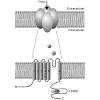
Hyperpolarization-activated cyclic nucleotide gated (HCN) channels pass a cationic current (Ih/If) that crucially contributes to the slow diastolic depolarization (SDD) of sinoatrial pacemaker cells and, hence, is a key determinant of cardiac automaticity and the generation of the heartbeat. However, there is growing evidence that HCN channels are not restricted ...
17-Oct-2011
The Journal of Cell Biology, online article
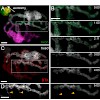
Schwann cells (SCs), the glial cells of the peripheral nervous system, cover synaptic terminals, allowing them to monitor and modulate neurotransmission. Disruption of glial coverage leads to axon degeneration and synapse loss. The cellular mechanisms that establish and maintain this coverage remain largely unknown. To address this, we labeled single SCs and ...
09-Sep-2011
Human Molecular Genetics, online article
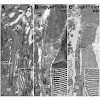
Rationale: The hyperpolarization-activated current Ih that is generated by hyperpolarization-activated cyclic nucleotide-gated channels (HCNs) plays a key role in the control of pacemaker activity in sinoatrial node cells of the heart. By contrast, it is unclear whether Ih is also relevant for normal function of cardiac ventricles. Objective: To study the role of ...
31-Aug-2011

Neurons of the Grueneberg ganglion (GG) in the anterior na- sal region of mouse pups respond to cool temperatures and to a small set of odorants. While the thermosensory reactiv- ity appears to be mediated by elements of a cyclic guanosine monophosphate (cGMP) cascade, the molecular mecha- nisms underlying the odor-induced responses are unclear. Since ...
29-Aug-2011
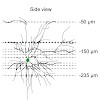
Single cortical neurons in the mammalian brain receive signals arising from multiple sensory input channels. Dendritic integration of these afferent signals is critical in determining the amplitude and time course of the neurons’ output signals. As of yet, little is known about the spatial and temporal organization of converging sensory inputs. Here, we combined ...
11-Aug-2011
Neuron, online article
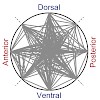
Previous studies of the ferret visual cortex indicate that the development of direction selectivity requires visual experience. Here,weused two-photon calcium imaging to study the development of direction selectivity in layer 2/3 neurons of the mouse visual cortex in vivo. Surprisingly, just after eye opening nearly all orientation-selective neurons were also ...
03-Aug-2011
The Journal of Neuroscience, online article
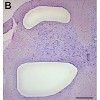
A large body of evidence indicates that nitric oxide (NO) and cGMP contribute to central sensitization of pain pathways during inflammatory pain. Here, we investigated the distribution of cyclic nucleotide-gated (CNG) channels in the spinal cord, and identified the CNG channel subunit CNGA3 as a putative cGMP target in nociceptive processing. In situ ...
26-Jun-2011
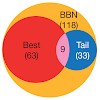
The individual functional properties and spatial arrangement of afferent synaptic inputs on dendrites have a critical role in the processing of information by neurons in the mammalian brain. Although recent work has identified visually-evoked local dendritic calcium signals in the rodent visual cortex, sensory-evoked signalling on the level of dendritic spines, ...
05-Jun-2011
Nature Methods, online article
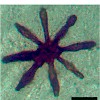
The correlation of light and electron microscopy of complex tissues remains a major challenge. Here we report near-infrared branding (NIRB), which facilitates such correlation by using a pulsed, near-infrared laser to create defined fiducial marks in three dimensions in fixed tissue. As these marks are fluorescent and can be photo-oxidized to generate electron ...
12-Apr-2011
PNAS, online article
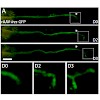
In the peripheral nervous system (PNS), damaged axons regenerate successfully, whereas axons in the CNS fail to regrow. In neurons of the dorsal root ganglia (DRG), which extend branches to both the PNS and CNS, only a PNS lesion but not a CNS lesion induces axonal growth. How this differential growth response is regulated in vivo is only incompletely understood. ...
A reversible form of axon damage in experimental autoimmune encephalomyelitis and multiple sclerosis
27-Mar-2011
Nature Medicine, online article

In multiple sclerosis, a common inflammatory disease of the central nervous system, immune-mediated axon damage is responsible for permanent neurological deficits1,2. How axon damage is initiated is not known. Here we use in vivo imaging to identify a previously undescribed variant of axon damage in a mouse model of multiple sclerosis. This process, termed ‘focal ...
25-Feb-2011
The Journal of Biological Chemistry, online article

Sequential processing of the beta-amyloid precursor protein (APP) by beta- and gamma - secretase generates the amyloid beta - peptide (Abeta), which is widely believed to play a causative role in Alzheimer´s disease (AD). Selective lowering of the pathogenic 42 amino acid variant of Abeta by gamma-secretase modulators (GSMs) is a promising therapeutic strategy. ...
14-Feb-2011

Opening of hyperpolarization-activated cyclic nucleotide-gated (HCN) channels is facilitated by direct binding of cyclic nucleotides to a cyclic nucleotide-binding domain (CNBD) in the C-terminus. Here, we show for the first time that in the HCN2 channel cGMP can also exert an inhibitory effect on gating via cGMP-dependent protein kinase II (cGKII)-mediated ...
02-Feb-2011
The Journal of Neuroscience, online article
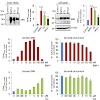
Numerous loss-of-function mutations in the progranulin (GRN) gene cause frontotemporal lobar degeneration with ubiquitin and TAR–DNAbinding protein 43-positive inclusions by reduced production and secretion of GRN. Consistent with the observation thatGRN has neurotrophic properties, pharmacological stimulation ofGRNproduction is a promising approach to rescue ...
26-Jan-2011
Cold Spring Harbor Perspectives in Biology, online article
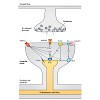
Metabotropic glutamate receptors type 1 (mGluR1s) are required for a normal function of the mammalian brain. They are particularly important for synaptic signaling and plasticity in the cerebellum. Unlike ionotropic glutamate receptors that mediate rapid synaptic transmission, mGluR1s produce in cerebellar Purkinje cells a complex postsynaptic response consisting ...
05-Jan-2011

The rd1 natural mutant is one of the first and probably the most commonly studied mouse model for retinitis pigmentosa (RP), a severe and frequently blinding human retinal degeneration. In several decades of research, the link between the increase in photoreceptor cGMP levels and the extremely rapid cell death gave rise to a number of hypotheses. Here, we provide ...
03-Jan-2011
Nature Protocols, online article
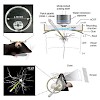
Neurons in cortical sensory regions receive modality-specific information through synapses that are located on their dendrites. Recently, the use of two-photon microscopy combined with whole-cell recordings has helped to identify visually evoked dendritic calcium signals in mouse visual cortical neurons in vivo. The calcium signals are restricted to small ...
10-Jul-2010
Cell. Mol. Life Sci., online article

Neuronal hyperpolarization-activated cyclic nucleotide-gated (HCN) channels are known to modulate spontaneous activity, resting membrane potential, input resistance, afterpotential, rebound activity, and dendritic integration. To evaluate the role of HCN2 for hippocampal synaptic plasticity, we recorded long-term potentiation (LTP) in the direct perforant path ...
05-Jan-2010
The Journal of Neuroscience, online article
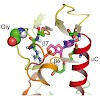
The cyclic nucleotide-gated (CNG) cation channel of rod photoreceptors is a heterotetramer consisting of homologous CNGA1 and CNGB1a subunits. While CNGA1 is indispensable for channel activation, the specific role of CNGB1a in this process has remained elusive. Here, we show that the N-terminal glutamic acid-rich protein (GARP) domain of CNGB1a and soluble GARP2, ...










